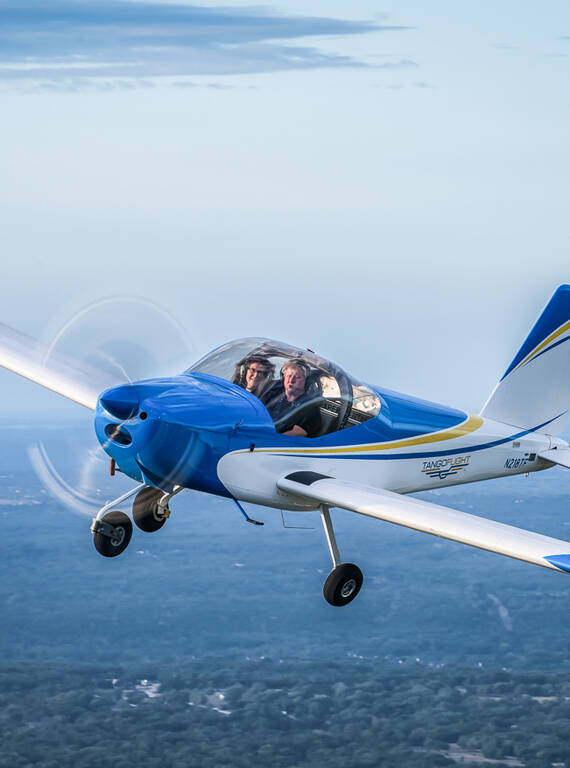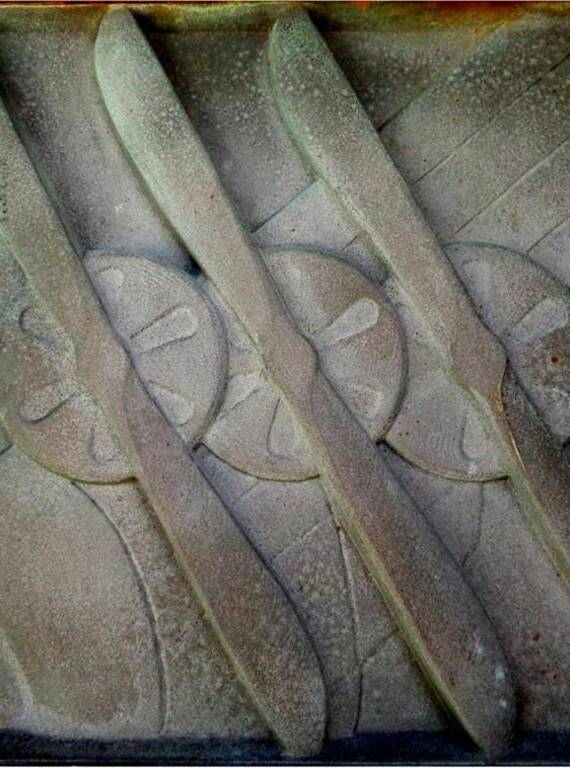The Wright Brothers were first in flight. Now, in the new Wright Flight Academy, high schoolers are building a plane on the same coastal landscape where aviation was born.
More than 120 years after Orville and Wilbur Wright made humankind’s first powered flights, a group of high schoolers is building a two-person airplane on the same coastal strip where the Wright Brothers ushered in the age of aviation.
Led by a retired U.S. Navy aviator, 23 students at First Flight High School in Kill Devil Hills, North Carolina, will build the all-metal, light sport aircraft over a two-year period in a newly constructed aviation lab at Wright Brothers National Memorial.
Called The Wright Flight Academy, the lab is a collaboration between Dare County Schools and the National Park Service. The students are building a Van’s Aircraft RV-12iS model, which seats a pilot and a passenger side by side.
“Right here, in the shadow of where flight first took place, we can have students start out on their aviation careers,” said the students’ instructor, Admiral Murray Tynch III, in a video series documenting the students’ progress.

The Van’s Aircraft RV-12iS model.
Courtesy of Tango Flight Inc.Park Service staff are working closely with the class to share the Wright Brothers’ story of courage, perseverance and teamwork.
“You’ll have some good days and some challenging days, there will be successes and setbacks. All of those are part of the learning process, and they were all experienced by the Wright Brothers right behind you here at Wright Brothers National Memorial,” David Hallac, superintendent of the memorial and two other national park sites on North Carolina’s Outer Banks, said at a ribbon-cutting for the aviation lab.
Students began working in the aviation lab during the fall 2023 semester. The high school’s elective Aviation I and Aviation II courses use the Tango Flight Inc. curriculum, which introduces students to mechanical, electrical and aerospace engineering and develops technical and mechanical skills to build an airplane that will be certified by the Federal Aviation Administration. While other schools in the U.S. have used this curriculum, First Flight High School is the first school in North Carolina to offer the program.
The students expect to complete the plane by the end of the 2024-25 school year.
After the aircraft undergoes extensive testing and certification by the FAA, each student involved in the project will be invited to ride in the plane — piloted by a Tango Flight member — at Wright Brothers National Memorial’s First Flight Airport.
First Flight High School neighbors Wright Brothers National Memorial. The students are spending time in the classroom, at the national memorial’s exhibits and in the aviation lab to complete the project.
“Sometimes you live so close to history, you forget a little bit about it,” Tynch said in the video series, as students toured the park site at the start of the school year. “So, it’s good for the students to get to the national park and see it before we kick things off and understand more fully how the Wright Brothers tried many times, they had many failures, to get where they were going and never gave up.”
In the lab, students have started building small parts, moving to larger parts and eventually the airplane body. So far, they seem excited.
“This place holds so much importance and significance in the place of history of aviation,” student Alex Harvey said in the video series. “Just how far aviation has come to this point, where we can build a plane in school — it’s nice,” student Everest Oellette said.
“I love this class,” student Preston Benner said. “It’s not a class I thought I would ever have in my life. We’re building an airplane — it’s a lot of fun.”
First in Flight
Wilbur and Orville Wright achieved the world’s first successful powered, piloted flights on Dec. 17, 1903, along the Outer Banks of North Carolina. Inspired by a childhood toy helicopter powered by a rubber band, the self-taught mechanics and bicycle shop owners in Dayton, Ohio, observed birds and experimented with kites as part of their fascination with aviation.
Ready to try bigger flying machines, they asked the National Weather Bureau in Washington, D.C., for a list of East Coast sites with constant winds to help them achieve lift. They chose Kitty Hawk, which the bureau identified as the sixth windiest location. The area also offered sand for soft landings and isolation for privacy. Their first attempts at flight proved disastrous, but they kept trying.
Wright Brothers National Memorial, designated in 1927 as Kill Devil Hills Monument, tells their story of ingenuity and dedication. The park site features replicas of their early flying machine and the strip of land where they conducted their flight tests.
Most of the brothers’ glider experiments took off from Big Kill Devil Hill, a massive sand dune in the early 1900s, which today is the grassy hill where the Wright Brothers Monument stands. The brothers trod up this dune and three others nearby thousands of times with their glider — the deep, soft sand making every climb strenuous.

One of eight relief panels located on the door of the Wright Brothers Monument. It represents the design of modern propellers the Wright brothers developed to achieve forward thrust.
NPSFrom these glider experiments, the Wright Brothers learned about lift and control. Their powered flights, which did not require elevation for take-off, started from the flat ground outside their camp, near where the visitor center is today. This spot is commemorated by the First Flight Boulder and Flight Line, a series of stones marking the distance the brothers’ subsequent flights achieved.
The grass visitors see today at the site was planted for the 25th anniversary of the Wright Brothers’ flight to stop wind erosion that was altering the landscape and to stabilize Big Kill Devil Hill for the monument.

The Wright Stuff
The origins of flight are revealed at Wright Brothers National Memorial.
See more ›The National Park Service manages a second site related to the birth of aviation. Dayton Aviation Heritage National Historical Park in Ohio includes the last surviving bicycle shop owned by the Wright brothers and the Huffman Prairie Flying Field where they tested their early flying machines.
The Dayton park site also celebrates the legacy of poet, novelist and playwright Paul Laurence Dunbar, one of the foremost African American poets and writers of the early 20th century. He lived in the same Dayton neighborhood as the Wright Brothers and was their lifelong friend.
Stay On Top of News
Our email newsletter shares the latest on parks.
About the author
-
 Linda Coutant Staff Writer
Linda Coutant Staff WriterAs staff writer on the Communications team, Linda Coutant manages the Park Advocate blog and coordinates the monthly Park Notes e-newsletter distributed to NPCA’s members and supporters. She lives in Western North Carolina.
-
General
-
- NPCA Region:
- Southeast